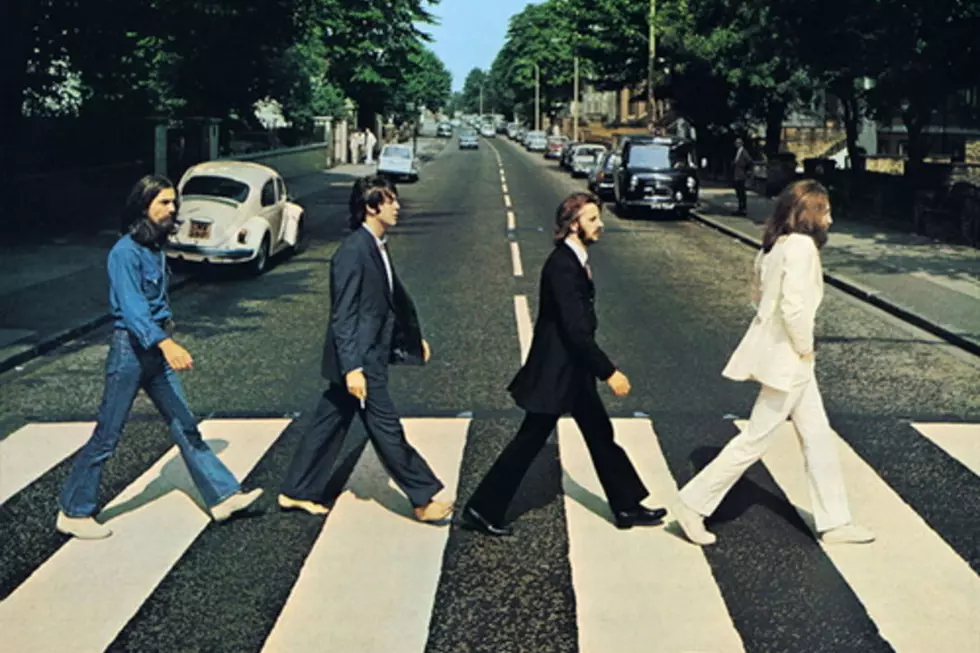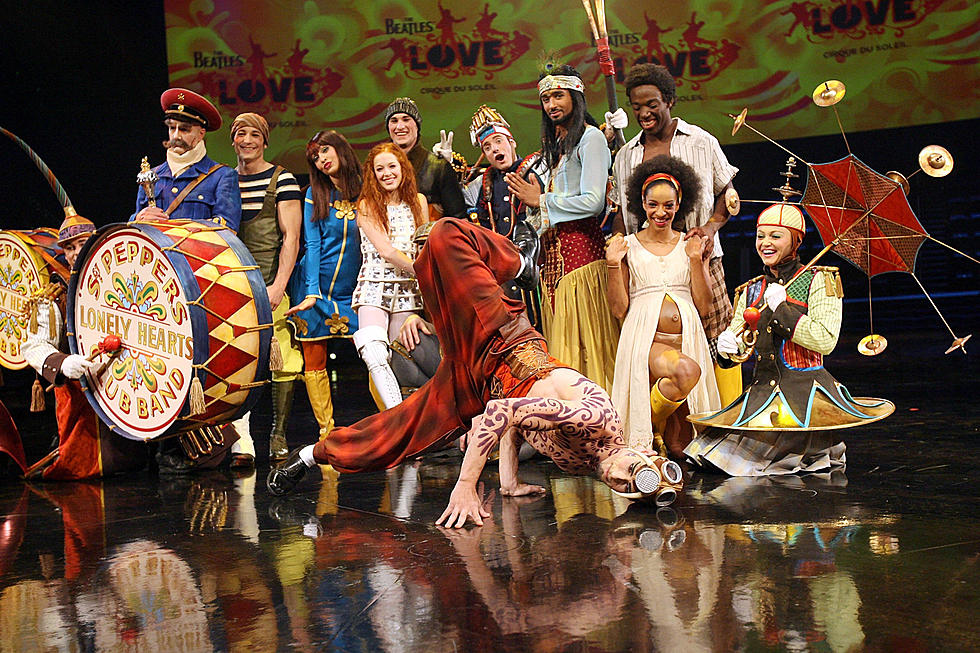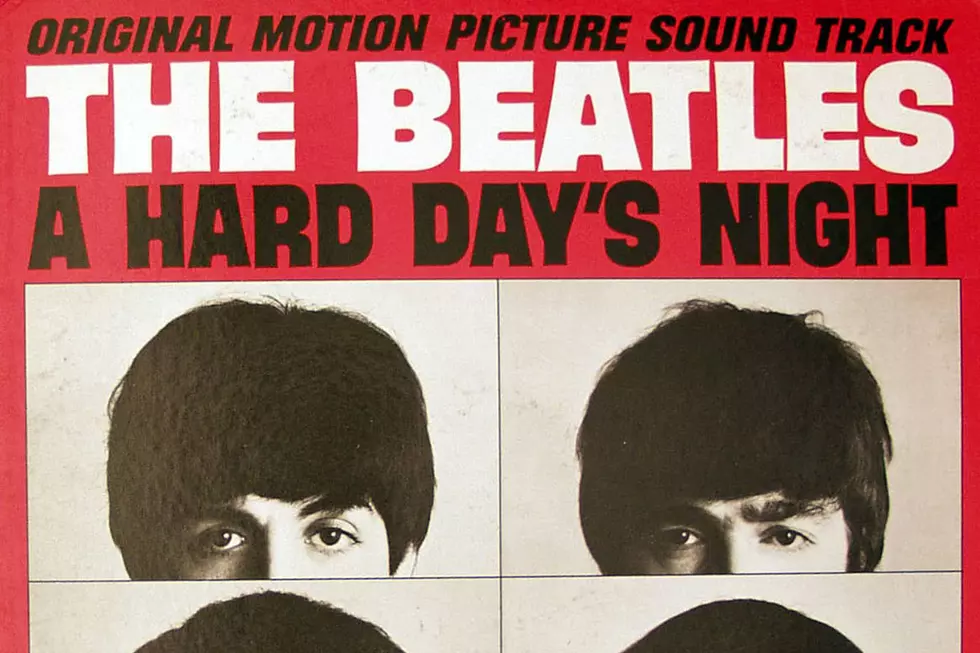
How the Beatles Said a Proper Goodbye With ‘Abbey Road’
In early January 1969, following the fractious White Album sessions, the Beatles were determined to get back to their roots recording as a unit. But it didn't work out that way.
With film cameras documenting their every move – including some heated arguments among band members – and tensions still festering from the previous year, the sessions were pretty much set up for failure. And things derailed rather quickly.
By the time the band famously took to the roof of Apple Records for an impromptu midday concert, almost everyone involved knew they had a disaster on their hands. So, it was no surprise that the recordings intended for the Get Back album were shelved (later to surface, remixed and retooled, as Let It Be) as the Beatles plotted their next move.
In a way, the sessions that began on Feb. 22, 1969, for Abbey Road reflected what the group had planned for Get Back: The four of them in the studio with producer George Martin, limited use of the embellishments that buoyed recent records such as Sgt. Pepper's Lonely Hearts Club Band, and a sense of camaraderie that hadn't been felt since Beatlemania swept the planet. For one last shining moment, the Beatles were the Beatles again.
And it all happened where they launched their recording career six years earlier: at London's EMI Studios, located at 3 Abbey Road. Well, most of it anyway. The first thing recorded for the album, the backing track for "I Want You (She's So Heavy)"' was actually done at London's Trident Studios (another London studio, Olympic, was also used for a few later recordings). After that, Ringo Starr went off to film The Magic Christian, and the band put the record on hold until May.
Listen to the Beatles Perform 'Here Comes the Sun'
Another break followed until recording started up again, this time with everyone's full attention, in July and continued through August, when the last backing track ever played by the Beatles, for "Because," was laid down. Later in the month, the group assembled in the studio together for the final time for some overdubs.
And by all accounts, it was a pretty smooth run with very few of the heated exchanges that scarred the White Album and Get Back sessions. Still, some of the battles were carried over. Paul McCartney, who spearheaded the Beatles' thematic approach to albums with Sgt. Pepper's, wanted Abbey Road to flow together as a whole piece; John Lennon, on the other hand, wanted to "get back" in earnest to their early days, with straight-up, no-fuss rock 'n' roll songs.
So, they reached a compromise, with McCartney's medley of songs and fragments (most were his, but some were Lennon's) taking up the bulk of side two, with most of Lennon's songs (plus the George Harrison-penned and -sung "Something" and a couple of stray McCartney cuts, plus one by Ringo) on the first side. And almost by accident, one of the Beatles' greatest thematic albums was created.
From the opening snakelike hiss of "Come Together" to the final glorious strains of "The End" (not counting McCartney's 20-second coda, "Her Majesty"), Abbey Road sounds like many things: a lost bridge between the Beatles' two stages, a return to the one-for-all mentality of the early days and, ultimately, one last grasp at the magic that made them the world's most popular and influential group.
If the Beatles knew Abbey Road was going to be the last album they'd make, they sure didn't let on during the recording. (Though Harrison admitted later that "it felt as if we were reaching the end of the line.") There's a finality to the songs that surfaces in hindsight but, for the most part, they're not mournful. In fact, many are hopeful (parts of the medley), celebratory ("Here Comes the Sun"), joyful ("Octopus's Garden") and goofy ("Maxwell's Silver Hammer").
Listen to the Beatles Perform 'Come Together'
It was a fitting end to the band – one marked, appropriately, by a song called "The End," which features dueling guitars by Harrison, Lennon and McCartney, a rolling drum solo by Starr and one of the most poignant last words ever to close an album: "And in the end, the love you take is equal to the love you make."
The sessions wrapped on Aug. 20, and a little more than a month later, on Sept. 26, Abbey Road was released. By that time, Lennon had played his first solo show and told the other members he was leaving (though nobody else knew about this then). For the next few months, the Beatles resumed work individually on the abandoned Get Back tapes, getting them in order for what would be their final album the next year.
Abbey Road hit No. 1 and stayed there for 11 weeks, longer than any other album of theirs besides Sgt. Pepper's. "Come Together" and "Something" were released as a double A-side the same time as the album, and also made it to the top of the chart (the latter was Harrison's only No. 1 Beatles song). Since its release, Abbey Road become one of the Beatles' landmark records, a pivotal point in their short, storied career.
All these years later, its legacy spans nearly every aspect of the project – from its cover (the only one that doesn't include neither the band's name or the LP's title, the famous crossing photo has been one of their most iconic images) to the music inside (its songs have been covered by everybody from Frank Sinatra to Tenacious D; that eight-song, 16-minute medley that fills out side two ranks as one of the Beatles' best moments on record).
They didn't sound like a band coming apart at the time, and that's part of this album's lasting splendor. Even as they were splitting into four separate pieces, the Beatles pulled together the album that they had set out to make. Once again their determination paid off. Even if it was for only one final round.
The Stories Behind Every Beatles LP Cover
You Think You Know the Beatles?
More From Ultimate Classic Rock









